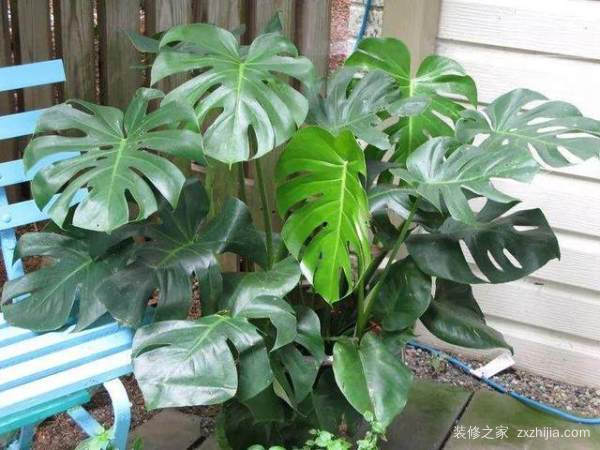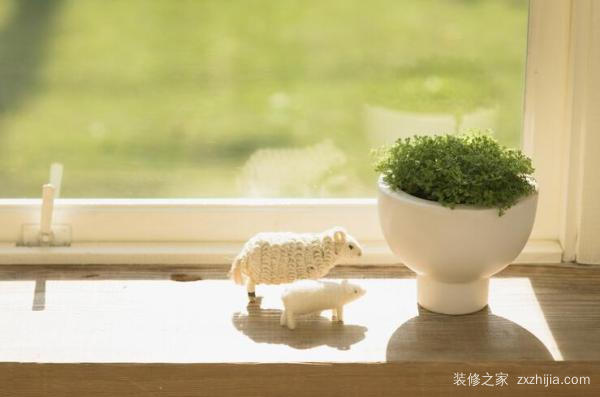Our house decoration is generally not immediately after the renovation, because there will be formaldehyde in the house, so we must first remove the formaldehyde, and some people may not understand the formaldehyde. So what kind of plants are there in the newly renovated house ? What are the hazards of formaldehyde in the newly renovated house? If you want to know, let’s take a look at the small series of the decoration home network.

First, what plants are placed in the newly renovated house?
1. Ivy is known as the champion plant for absorbing formaldehyde. It is the most effective indoor plant for absorbing formaldehyde. The leaves of ivy per square meter can absorb 1.48 mg of formaldehyde, while the total area of ​​leaves of 2 pots of adult ivy is about 0.78 square. Meter. At the same time, Ivy can also absorb benzene and toxic substances.
2. Aloe vera. The absorption capacity of formaldehyde is particularly strong. The ability of a pot of aloe to absorb harmful gases is equal to 9 times that of an ordinary air cleaner. It can absorb harmful substances such as formaldehyde, carbon dioxide and carbon monoxide, so it is known as an air purification expert.
3. Cactus: Most plants absorb carbon dioxide during the day to release oxygen, but at night it is the opposite. Cactus, tiger skin, sedum, aloe and spider plant have been absorbing carbon dioxide to release oxygen. These plants are very easy to survive.

Second, the newly renovated house formaldehyde hazard
1. Indoor pollution, mainly formaldehyde, benzene, ammonia and other pollutants. At present, a variety of artificial boards, adhesives, wallpapers, etc. all contain formaldehyde. Formaldehyde is recognized as a potential carcinogen in the world. It stimulates the mucous membranes of the eyes and respiratory tract, and eventually causes abnormal immune function, liver damage, lung damage and nervous system. It can also cause fetal malformations. Therefore, the newly renovated house must wait for 3-6 months before returning;
2. Among all contacts, children and pregnant women are particularly sensitive to formaldehyde, which is a major contaminant in decoration and furniture. Its release period lasts for 3-15 years. When it encounters heat, it will evaporate from the deep layers of the material and seriously pollute the environment. It has become a difficult global problem. It is the most harmful to the elderly, children and pregnant women.
3. Long-term exposure to low doses of formaldehyde can cause chronic respiratory diseases, causing nasopharyngeal carcinoma, colon cancer, brain tumors, menstrual disorders, nuclear mutations, DNA single-strand cross-linking and DNA-protein cross-linking and inhibition of DNA damage repair , pregnancy syndrome, causing neonatal chromosomal abnormalities, leukemia, causing memory and mental decline in adolescents.
There are a lot of plants in our house, so what kind of plants are there in the newly renovated house? What do you want to do with formaldehyde? I want to introduce the above necessary. Everyone knows about these questions, then if you still want to know more For more decorative information, please continue to pay attention to the decoration home Internet cafe.
More related wonderful reading:
Newly renovated house, what plant is newly renovated, house plant requirements
Our main products are The Biomedical Matrials: Poly (L-latic acid) PLLA, Poly(D-lactic acid) PDLA, Poly(DL-latic acid) PDLLA, Polycaprolactone PCL and their copolymers such as PLGA, PDLGA, PLCL, PEG-PLLA, PEG-PDLLA ,PEG-PLGA,PEG-PDLGA etc.
We also can provide you PLA/PCL/PLGA/PDLGA microspheres.The particle size of microspheres is from 5 microns to 30 microns.
Medical grade polymers are a type of plastic material that are specifically designed and manufactured to meet the stringent requirements for use in medical applications. These polymers offer several advantages over traditional materials such as metals, ceramics, and glass in terms of their biocompatibility, versatility, and cost-effectiveness. Some of the key advantages and applications of medical grade polymers include:
Biocompatibility: Medical grade polymers are designed to be biocompatible, which means that they do not cause an adverse reaction or toxicity when they come into contact with living tissue. This property makes them ideal for use in medical implants, drug delivery systems, and other medical devices.
Versatility: Medical grade polymers are highly versatile and can be molded into a variety of shapes and sizes. They can also be modified with different additives to enhance their properties such as flexibility, strength, and thermal stability. This versatility allows them to be used in a wide range of medical applications.
Cost-effectiveness: Medical grade polymers are generally more cost-effective than other materials such as metals and ceramics. This is because they can be manufactured in large quantities using injection molding or other high-volume production techniques.
Resistance to corrosion and wear: Medical grade polymers are highly resistant to corrosion and wear, which makes them ideal for use in medical devices that are exposed to bodily fluids and other harsh environments.
Some of the key applications of medical grade polymers include:
- Medical implants: Medical grade polymers are commonly used to manufacture implants such as artificial joints, dental implants, and pacemakers. These materials provide a high level of biocompatibility and can be easily molded into the required shape.
- Drug delivery systems: Medical grade polymers are also used to manufacture drug delivery systems such as capsules, pumps, and patches. These materials can be designed to release drugs at a controlled rate, which can improve their efficacy and reduce side effects.
- Medical devices: Medical grade polymers are used to manufacture a wide range of medical devices such as syringes, catheters, and tubing. These materials are highly versatile and can be designed to meet specific requirements such as flexibility, strength, and durability.
- Packaging: Medical grade polymers are also used to manufacture packaging materials for medical devices and pharmaceutical products. These materials provide a high level of protection and can be designed to meet specific requirements such as moisture resistance and gas permeability.
Overall, medical grade polymers offer several advantages over traditional materials in terms of their biocompatibility, versatility, and cost-effectiveness. These properties make them ideal for use in a wide range of medical applications.
Medical Grade Polymers,Medical Grade Polycaprolactone,Medical Grade Pcl,Medical Grade Polymer Powder
Rimless Industry Co.,Ltd. , https://www.rebornplla.com